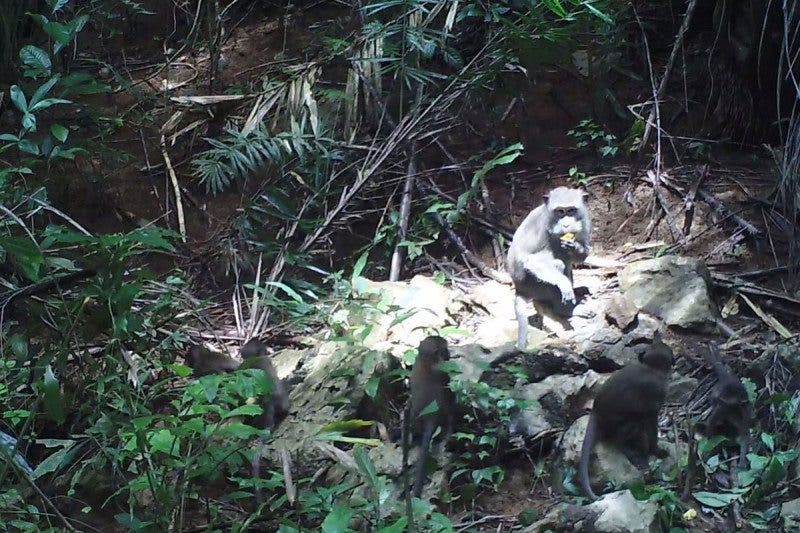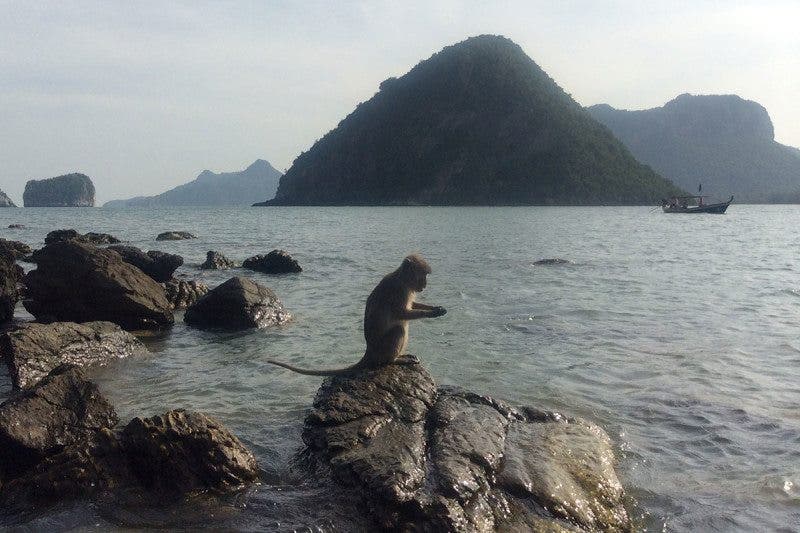It took macaques in Thailand just 13 years to learn how to crack open nuts with rocks.

There’s no official age for the beginning of the human Stone Age, but most anthropologists agree it started somewhere around 3.4 million years, ending 10,700 to 4,000 years ago, with the advent of metal working. Well, macaques seem to be entering that same period of their evolution. For over a century, macaques on the shore have been opening shells with rocks. Some of them moved inland and appeared to have figured out (and taught others) how to use rocks to open oil palm nuts.
What makes this behavior even more impressive is that oil palms have only been introduced to the area for 13 years. This means that within the span of 13 years, macaques figured out how to use rocks in a different setting. This could even mean that they’ve been in a Stone Age for a long time, since they have a deeper grasp of the rock-using process.
Using tools is not unheard of in the animal kingdom; on the contrary, there are a number of species which employ tools, from chimps to crows. But using stones is quite uncommon. In fact, only three species are known to do so: the western chimpanzees of West Africa, the bearded capuchins of Brazil and the long-tailed macaques of Thailand. But researchers thought this is strictly dependent on their particular environment — if they can move around and take the behavior with them, it paints a very different story.
“The chimpanzees live in tropical rainforest, and the capuchins in a dry savannah area,” says Lydia Luncz at the University of Oxford.
Meanwhile, the macaques live by Thailand’s seas, or at least spend a lot of time on the coast. However, they also like to roam inland. Luncz and colleagues followed the macaques through the Yao Noi Island in Thailand’s southern parts. They were ultimately led through an abandoned oil palm plantation, finding what appeared to be tools used to break nuts (hammer and anvil type rocks). Several broken nuts were found around the rocks. So they set up camera traps to see what was going on.

Over the course of three weeks, they witnessed both male and female macaques visiting the sites, carefully placing the nuts on the anvil rocks and hitting them with the hammer rocks, until the delicious kernel was exposed. The fact that they’ve transferred this knowledge from sea shells to inland nuts is remarkable, but that they’ve done so in only 13 years at most is even more impressive.
It indicates that they understand the process. It might mean that they’ve truly entered the Stone Age.
“We know the macaques use stone tools at the shore – we believe they have transferred that behaviour to a new food source,” says Luncz. “They’ve applied what they know from the shore to a different ecosystem.”
“So this is the first nut-cracking macaque generation on the island,” she says.

Elisabetta Visalberghi at the Institute of Cognitive Sciences and Technologies in Rome, Italy, says this is not surprising behavior, and macaques are known to be highly adaptable and intelligent. They exhibit a wide array of manipulative behaviors in order to get food, she says. She also points out that macaques have also been spotted cracking sea almonds produced by trees along the shore, so maybe it’s not such a large mental leap.
Yet even so, it’s an intriguing behavior which researchers would like to understand. Luncz and collaborators will now try to see how (if at all) the macaques’ stone usage is changing. Identifying an evolution would be a significant breakthrough, and the anthropogenic impact could greatly accelerate this evolution.
Journal Reference: Lydia V. Luncz Magdalena S. SvenssonMichael HaslamSuchinda MalaivijitnondTomos ProffittMichael Gumert. Technological Response of Wild Macaques (Macaca fascicularis) to Anthropogenic Change. DOI: 10.1007/s10764-017-9985-6


